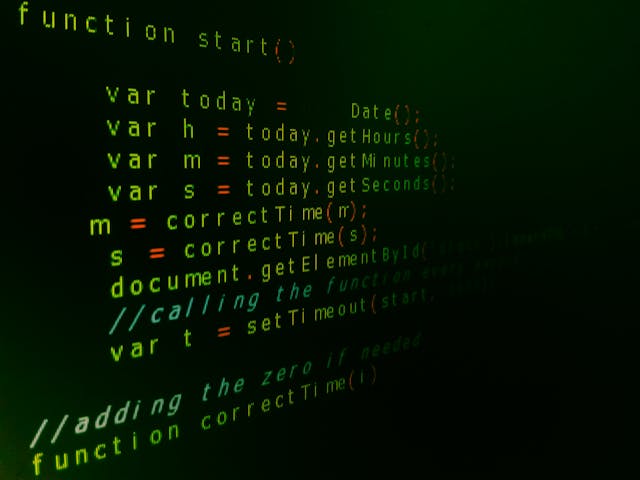The enigma of Scratch programming has ascended to substantial heights, largely owing to its engaging and approachable essence, especially amidst those yearning to pierce the veil of video game development. Such novices, or ‘Scratchers,’ frequently find themselves beguiled by its prospects, often echoing the question, “How does one fashion a game on scratch with levels?”
At its heart and soul, programming on Scratch is akin to maneuvering blocks in order to weave interactive narratives, animations and games. Paying heed particularly to the inquiry about structuring leveled games; it demands harnessing specific coding blocks which are instrumental in crafting intricate functionalities. This encompasses numerous characters or ‘Sprites,’ transformations in backdrops, movement dynamics along with control and sensing blocks among other elements.
This methodology necessitates an appreciation for ‘variables’ that reflect scores, levels etc., that fluctuate dynamically as the storyline progresses within this gaming universe. Through such intriguing interplay of components gradually evolving into complexity over time; an engrossing multi-tiered gaming experience can be successfully sculptured within Scratch’s domain.
Setting Up Your Workspace in Scratch
Embarking on the thrilling odyssey of game development via Scratch, one finds themselves at the intriguing threshold of organizing a coherent workspace. The pivot here rests upon ingraining oneself with the intricate details of the interface – a move that could potentially amplify your game crafting fluency. The Scratch interface, typically segmented into four fundamental zones -the stage, blocks palette, coding area and sprite area- needs to be arranged in an efficient manner for seamless design flow.
The conundrum ‘How does one craft a game on Scratch step by step?’ inevitably stems from this pivotal starting point. Grasping intricacies such as script placements, block categories within the blocks palette, nuances of sprite library and sound editor is absolutely non-negotiable. As you delve deeper into comprehending each function’s role and gradually become familiar with navigating through them all, replicating steps transforms into a breeze thus enhancing your gaming creation journey manifold. Remember always; maintaining an orderly workspace within Scratch forms the bedrock in your pursuit to weave together an engagingly interactive game.
The Basics of Game Design: Creating a Concept
Venturing into the mysterious and complex world of game design demands a profound grasp of its fundamental principles, coupled with a crystalline vision of the desired outcome. To solve the captivating riddle – how to craft an interesting game on Scratch, one must initially anchor their thoughts on formulating an engrossing idea. This concept serves as the bedrock of the game, weaving together gameplay mechanics, constituent elements and overall player experience.
The journey commences with generating fresh, fascinating and feasible ideas that echo in harmony with potential players’ preferences. Scratch’s interactive medium simplifies this task by allowing for tangible visualizations of these concepts while assembling disparate segments into a cohesive whole. The conjured up notion should resonate deeply with your target audience’s interests, triggering intrigue and promoting interaction. By stirring in an original mix of imaginative flair, tactical acumen and technological know-how; it is possible to devise a thrilling Scratch-based game that offers boundless enjoyment to its users.
Incorporating Levels into Your Game Design
Crafting an engaging and resilient game on Scratch is a more intricate endeavor than merely fabricating characters and scripting their movements; it calls for the integration of multifaceted gameplay levels into the construct. These levels do not just diversify gaming encounters but also incrementally escalate the degree of challenge in the game. Such systematic methodology sustains players’ interest, consistently offers them challenges, encouraging a sense of accomplishment and advancement.
As you embark on amalgamating these various layers, your game’s concept or theme demands meticulous consideration. It compels you to ponder upon inquiries such as: what represents victory at each stage, how will the gameplay metamorphose over time, and what approach will be used to effectuate transitions between different stages? Levels that are carefully designed and executed can result in an uninterrupted immersive gaming journey that ensnares players’ focus for extended durations. Strategic deployment of obstacles, rewards, power-ups across different tiers further amplifies the allure of your game by rendering level-up experience vibrant and gratifying.
Building Your First Level: A Step-by-Step Guide
Embarking on the odyssey of constructing your inaugural level in Scratch programming can be an intoxicating, yet intimidating endeavor. Fear not, for this comprehensive tutorial aims to shed light on the road ahead, distilling intricate notions into comprehensible morsels. In these embryonic stages, it’s paramount to establish your level’s raison d’etre. This entails discerning the nature of obstacles, structuring the terrain and assigning roles to characters involved. Ponder over the quandary you’d like your players to navigate and the repertoire of skills they’ll need to harness—maybe a labyrinthine puzzle that stirs cognitive abilities or perhaps a time-sensitive race demanding swift reflexes?
With your concept cemented, next comes translating these ideations into tangible elements within Scratch workspace – a challenge in itself! Begin by drafting out a blueprint of your level on paper; make note of specific elements such as traps or enemies along with their positions; don’t forget start and end points too! Transposing this layout onto Scratch is an exacting task that requires keen observation and precision.
Leverage coding blocks offered by Scratch whilst experimenting with ‘Motion’ variants for dynamics; ‘Looks’ variants for visual aesthetics; ‘Sensing’ ones for interactions. Remember: The goal in game development isn’t solely about challenging gamers but also providing them an engrossing experience that immerses them completely. By adhering rigorously to this guide map, crafting your first-ever level becomes less petrifying—more akin to embarking upon an exploration journey teeming with revelations.
Replicating and Varying Levels for Increased Difficulty
The craft of skillfully mirroring and fluctuating stages in Scratch hinges precariously on a judicious equilibrium of constancy and diversity. One might argue that sustaining an underlying structure throughout the levels offers a comforting continuity, anchoring the player’s consciousness within the game’s realm – it enhances their experience and deepens engagement. This can be deftly achieved by reincorporating vital components, imagery or motifs from preceding levels as a point d’appui. The techniques involved in stage duplication within Scratch are rather uncomplicated, mostly demanding mere replication of specific scripts or sprites while subsequently incorporating necessary modifications.
Yet, caution must be exercised; mechanically replicating levels word-for-word may culminate into predictable and monotonous gameplay – thus failing to pose any intellectual challenge or pique interest for the player. It is here that calculated deviations come into play, elevating gameplay to greater heights by crafting an invigorating yet challenging landscape that holds the player captive with its allure. Strategic modulation of difficulty gradations, meticulously designed puzzles, time-bound challenges contribute towards adding elements of controlled astonishment and unpredictability.
Scratch’s inherent flexibility permits such alterations effortlessly keeping players spellbound and committed.The paramount objective lies in maintaining an invigorating balance – ensuring your players neither succumb to ennui due to repetition nor feel swamped by haphazard changes devoid of context.
Adding Scoring Systems and Power-ups to Your Game

Infusing your Scratch game with a jolt of rivalry and thrill is made possible by the inclusion of a sturdy scoring system. Such systems not only gauge the player’s triumphs or setbacks but also instill a feeling of progression and accomplishment. Whether it’s gathering coins in a platformer, skillfully dodging obstacles, or vanquishing foes in combat scenarios, assigning points serves as an efficient way to boost player engagement. Moreover, showcasing the player’s score boldly on the game interface keeps them constantly aware of their performance, spurring them towards better outcomes.
In parallel fashion, incorporating power-ups can significantly amplify gameplay dynamics. Power-ups are unique elements that bestow upon players temporary or enduring abilities surpassing their normal capabilities when obtained. These “bonus” components could range from speed enhancements for swift navigation to shields offering protection against threats or even power-ups that modify the game environment to favor the player. Strategically placing these power-ups across your game levels can heighten gaming excitement by sustaining an elevated level of surprise and unpredictability. Consequently, they play a crucial role in keeping players engrossed over long stretches of gameplay sessions.
Furthermore, the strategic use of scoring systems and power-ups can be an effective tool in determining the difficulty level of your game. By adjusting point values or frequency of power-ups available, you have direct control over how challenging your game is to players. This allows for a more tailored gaming experience that can cater to both novices and seasoned gamers alike.
Scoring System
- A well-implemented scoring system provides tangible goals for players.
- It enables them to track their progress throughout gameplay.
- Assigning points based on player actions serves as positive reinforcement, encouraging continued engagement with the game.
- Displaying scores prominently on-screen ensures constant awareness of performance levels, motivating players towards improvement.
Power-Ups
- Power-ups introduce unique elements into gameplay which enhance player abilities beyond normal limits when obtained.
- These could include speed boosts for faster navigation, shields for protection against threats or even environmental modifiers benefiting the player.
- Strategically placed power-ups add a layer of surprise and unpredictability to each level, maintaining high levels of excitement during play sessions.
Difficulty Level
- The careful adjustment of point values or availability of power-ups can directly influence the challenge factor within your game.
- This facilitates a customized gaming experience adaptable to different skill levels – from beginners to experienced users.
In conclusion, implementing robust scoring systems and inventive power-ups not only adds depth and variety but also significantly enhances overall player engagement in your Scratch games. By considering these factors during development stages you are ensuring that your creation offers an immersive and enjoyable gaming journey for all types of players.
FAQ
Commencing with Scratch Programming demands a comprehensive understanding of its interface, encapsulating the Stage, Sprites, Blocks and Scripts. Furthermore, a familiarity with the myriad commands and their interaction within your game objects is paramount.
The arrangement of your workspace in Scratch necessitates creating an entirely new project. This includes selecting or generating sprites and preparing the stage accordingly. For an uncluttered coding experience, it’s key to keep your blocks organized.
Breeding a game concept encompasses conjuring an idea for a game whilst defining its goals, mechanics characters and narrative arc. Preeminently crucial step that lays down the groundwork for your entire gaming design process.
Levels can be seamlessly fused into your gaming design by crafting distinct stages or scenarios awaiting completion by players. Each level could bear divergent complexity thereby escalating difficulty quotient keeping player engagement on high gear.
The article meticulously provides thorough guidance on building initial level comprising steps like defining objectives specific to level , designing layout, establishing game mechanics culminating with testing phase of said level.
Replicating levels involves using analogous layouts &mechanics but introducing variation by amplifying enemy count,reducing time limit or unveiling fresh obstacles keeps challenge alive while ensuring excitement doesn’t wane.
Scoring mechanisms are integrated by attributing points to specific actions/achievements within gameplay.Power ups are introduced as exclusive items /abilities rendering players advantage.These elements not only enrich gameplay but also incentivize players to exceed performance.


